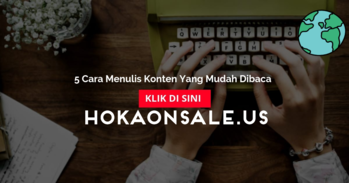
5 Ways to Write Easy-to-Read Content
Created on 3 July, 2024 • Marketing & Business Communication • 146 views • 2 minutes read
On this page, you can learn how to write content that is easy to read. These tips can be used for any channel, whether it’s email, a blog, or social media, helping your audience read and understand your writing effortlessly.
5 Ways to Write Easy-to-Read Content
On this page, you can learn how to write content that is easy to read. These tips can be used for any channel, whether it’s email, a blog, or social media, helping your audience read and understand your writing effortlessly.
So, how do you write content that’s easy to read?
The key is to make your writing scanable. You might be wondering, what does scanable mean? Let us explain with a simple illustration.
Imagine you're in a bookstore looking to buy a book. There are many books, but a few titles catch your eye. Luckily, these books have samples for you to read. Since you don’t have much time, you won’t read the entire book. Instead, you might:
- Open a few pages,
- Skim through them,
- Pay extra attention to certain pages that stand out.
This process is called scanning. The content that catches your eye is scanable.
Why Write Scanable Content?
From the illustration above, it’s clear that scanable content influences whether people keep reading or not. Here are a few reasons why your content should be scanable:
- Creates a Good Impression: Scanable content is easier to read and leaves a positive impression.
- Helps Find Information Quickly: A study by Jacob Nielsen in 2008 found that people read only about 20% of the text on a page. So, if a page has 100 words, people only read about 20. This means most people scan rather than read everything. Scanable content helps them find what they’re looking for quickly.
How to Write Easy-to-Read Content
Here are five ways to make your content scanable:
- Use subheadings
- Keep paragraphs short
- Use lists
- Include high-quality visuals
- Use readable fonts
Use Subheadings
Using subheadings helps readers understand the main points and outline of your content. This applies to blogs, academic journals, magazine articles, and emails. Subheadings also help readers grasp the main ideas in longer content, making it easier to follow along.
Keep Paragraphs Short
Short paragraphs are easier to digest, encouraging readers to read more. Newspapers and magazines often use short paragraphs with just 1-3 sentences, creating more white space and keeping the content clean.
Use Lists
Lists make content look neat and attractive, providing a visual break and making it easier for readers to scan. Lists also stand out from other text formats, capturing readers' attention during their scanning process.
Include High-Quality Visuals
High-quality visuals make your content more engaging and provide a visual representation of your message. Most people are visual learners, and visuals help them remember information better. There’s a saying: a picture is worth a thousand words.
Use Readable Fonts
Fonts play a significant role in how your content looks and feels. The right font type, color, size, and consistency can enhance your content, while poor choices can ruin it. Here are some font tips:
- Use commonly used fonts like Arial, Verdana, Georgia, Times New Roman, or Trebuchet MS. Avoid Comic Sans MS.
- Decorative fonts are okay in moderation.
- Use point units (pt) for print content and pixels (px), ems (em), or percentages (%) for digital content.
- The body text should be at least 12 px.
- Be mindful of using CAPSLOCK for emphasis.
- Stick to no more than two font types for consistency.
Conclusion
To make your content easy to read, ensure it’s scanable by using subheadings, short paragraphs, lists, high-quality visuals, and readable fonts. These tips will help your audience engage with your content more effectively. If you have any suggestions, feedback, or questions, feel free to share them in the comments below. We hope you find this helpful and see you in the next article!